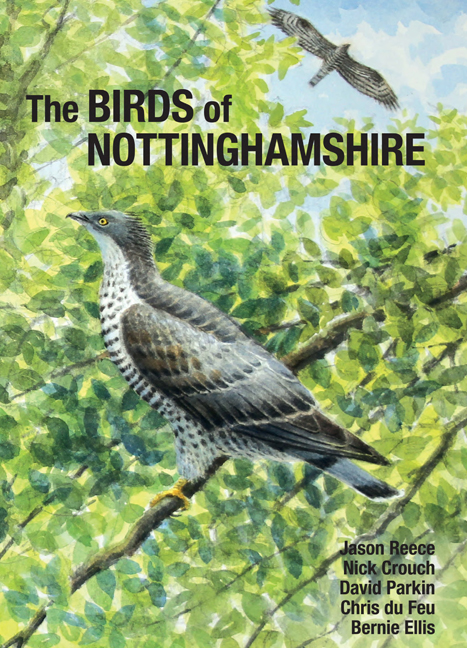Book contents
- Frontmatter
- Contents
- Foreword
- Acknowledgements
- Species sponsorship
- Introduction
- A history of bird recording in Nottinghamshire
- A description of Nottinghamshire and its bird habitats
- Methods
- Species accounts
- Additional Records 2014–2018
- Appendix: Additional and contentious species
- References
- Index
- Miscellaneous Endmatter
Introduction
- Frontmatter
- Contents
- Foreword
- Acknowledgements
- Species sponsorship
- Introduction
- A history of bird recording in Nottinghamshire
- A description of Nottinghamshire and its bird habitats
- Methods
- Species accounts
- Additional Records 2014–2018
- Appendix: Additional and contentious species
- References
- Index
- Miscellaneous Endmatter
Summary
Nottinghamshire might not feature amongst the obvious choices for Britain's top birding county, but there is a long and proud heritage of local recording stretching back to the pioneering work of William J. Sterland and Joseph Whitaker in the nineteenth century.
Whitaker played a part in the identification of one of the county's most notable early records, Britain's first Egyptian Nightjar which was shot at Thieves Wood in June 1883 (and which is still on display at Mansfield Museum). This is one of five national firsts recorded in Nottinghamshire, the most recent of which was a Redhead at Bleasby and Gibsmere in March 1996. This latter bird was one of a number of high-quality rarities (including Bufflehead, Sora, Little Swift and Cedar Waxwing) which have attracted birders from beyond the county in recent decades.
Other visitors have been attracted by the Honeybuzzards in the Dukeries and the Hawfinches at Clumber Park and Rufford Country Park, while gravel working in the county has left a legacy of outstanding sites such as Langford Lowfields, and Attenborough and Idle Valley Nature Reserves. These sites are the successors to the extensive complex of settling beds by the River Trent at Nottingham Sewage Farm, which attracted a number of notable birds in the mid-twentieth century including Britain's first breeding Black-winged Stilts in 1945 (an event which has been commemorated in the logo adopted by the county bird club). Elsewhere there are still remnants of mature oak woodland, warrens and lowland heath which play host to a number of specialist breeding species such as Common Redstart and European Nightjar, even if the breeding Black Grouse and Stone-curlew are long gone.
The last attempt at a comprehensive overview of the birds of the county (Birds of Nottinghamshire: Past and Present) was edited by Austen Dobbs for the county bird club, then titled the Trent Valley Bird Watchers and published in 1975. In that year, Harold Wilson was Prime Minister, ‘Bohemian Rhapsody’ was the Christmas number one, Brian Clough had commenced his 18-year reign as manager of Nottingham Forest and the White-tailed Eagle was reintroduced to the United Kingdom.
- Type
- Chapter
- Information
- The Birds of Nottinghamshire , pp. 1Publisher: Liverpool University PressPrint publication year: 2019



